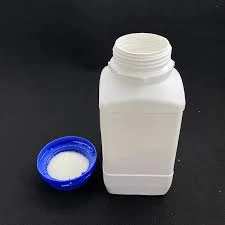Understanding Dechlorinators The Importance of Dechlorinator Chemicals in Water Treatment
In today's world, clean and safe drinking water is a fundamental necessity. However, with numerous contaminants affecting water quality, the need for effective water treatment solutions has never been more pressing. Among these solutions, dechlorination stands out as a critical process for ensuring water purity, particularly in municipal water supplies and industrial applications. This article delves into the importance of dechlorinator chemicals, their applications, and their role in protecting both public health and the environment.
What is Dechlorination?
Dechlorination is the process of removing chlorine and chloramine, two common disinfectants used in water treatment. While these chemicals are effective in killing bacteria and pathogens, they can also be harmful to aquatic life and human health if left in the water supply. Chlorine can cause skin and eye irritation in humans and is toxic to fish and other aquatic organisms. Thus, the removal of these disinfectants before water reaches consumers or is discharged back into the environment is essential.
The Role of Dechlorinator Chemicals
Dechlorinator chemicals are substances specifically designed to neutralize chlorine and chloramine in water. The most commonly used dechlorinators include sodium thiosulfate, sulfur dioxide, and ascorbic acid (vitamin C). Each of these chemicals has distinct characteristics that make them suitable for different water treatment scenarios.
1. Sodium Thiosulfate This is a widely used dechlorinator due to its effectiveness and affordability. When added to chlorinated water, sodium thiosulfate reacts with chlorine to form harmless byproducts, making it a popular choice for municipal water systems and aquariums.
2. Sulfur Dioxide This gas is another potent dechlorinant. It is often used in larger-scale applications, such as in industrial processes, where large volumes of water require treatment. Sulfur dioxide is injected into the water stream and, upon dissolving, reacts with chlorine to form hydrochloric acid, which is then neutralized by other chemical processes.
dechlorinator chemical

3. Ascorbic Acid An environmentally friendly alternative, ascorbic acid is particularly favored in the aquaculture and aquarium industries, as it is safe for fish and other aquatic organisms. It effectively neutralizes both chlorine and chloramine, ensuring that water is safe for immediate use.
Applications of Dechlorinator Chemicals
The applications of dechlorinators span across various sectors. In municipal water treatment facilities, these chemicals ensure that the water entering households is free of harmful levels of chlorine and chloramine. In the aquarium and aquaculture industries, dechlorinator chemicals are critical for maintaining healthy environments for aquatic species. Furthermore, in industrial applications, these chemicals prevent damage to equipment and protect aquatic ecosystems when wastewater is released.
Environmental Impact
The use of dechlorinator chemicals not only protects human health but also supports environmental sustainability. By effectively eliminating chlorine and chloramine, dechlorination reduces the risk of harmful effects on aquatic life. This is particularly important in regions where wastewater is discharged into rivers or lakes, as untreated chlorinated water can lead to significant ecological imbalances.
Conclusion
In conclusion, dechlorinator chemicals play a vital role in modern water treatment practices. By effectively neutralizing chlorine and chloramine, these substances contribute to safeguarding public health, protecting aquatic ecosystems, and promoting environmental sustainability. As water contamination continues to be a global challenge, the importance of effective dechlorination processes cannot be overstated. As we strive for cleaner and safer water, the role of dechlorinator chemicals will remain crucial in ensuring that water treatment methods meet the highest standards of safety and efficacy.

